Vernal pools are temporary to semi-permanent wetlands occurring in shallow depressions, and in northeastern North America, they are associated with forested landscapes. Vernal pools are of special concern for amphibians in northeastern North America where approximately 56% of frog, toad, and salamander species frequent vernal pools for breeding, development, foraging, or hibernation. Although vernal pools are incredibly important to amphibian survival, they are often not afforded protection under wetland protection regulations and are often overlooked as monitoring sites. As a result, vernal pools continue to be degraded and destroyed by human activities and land use change.
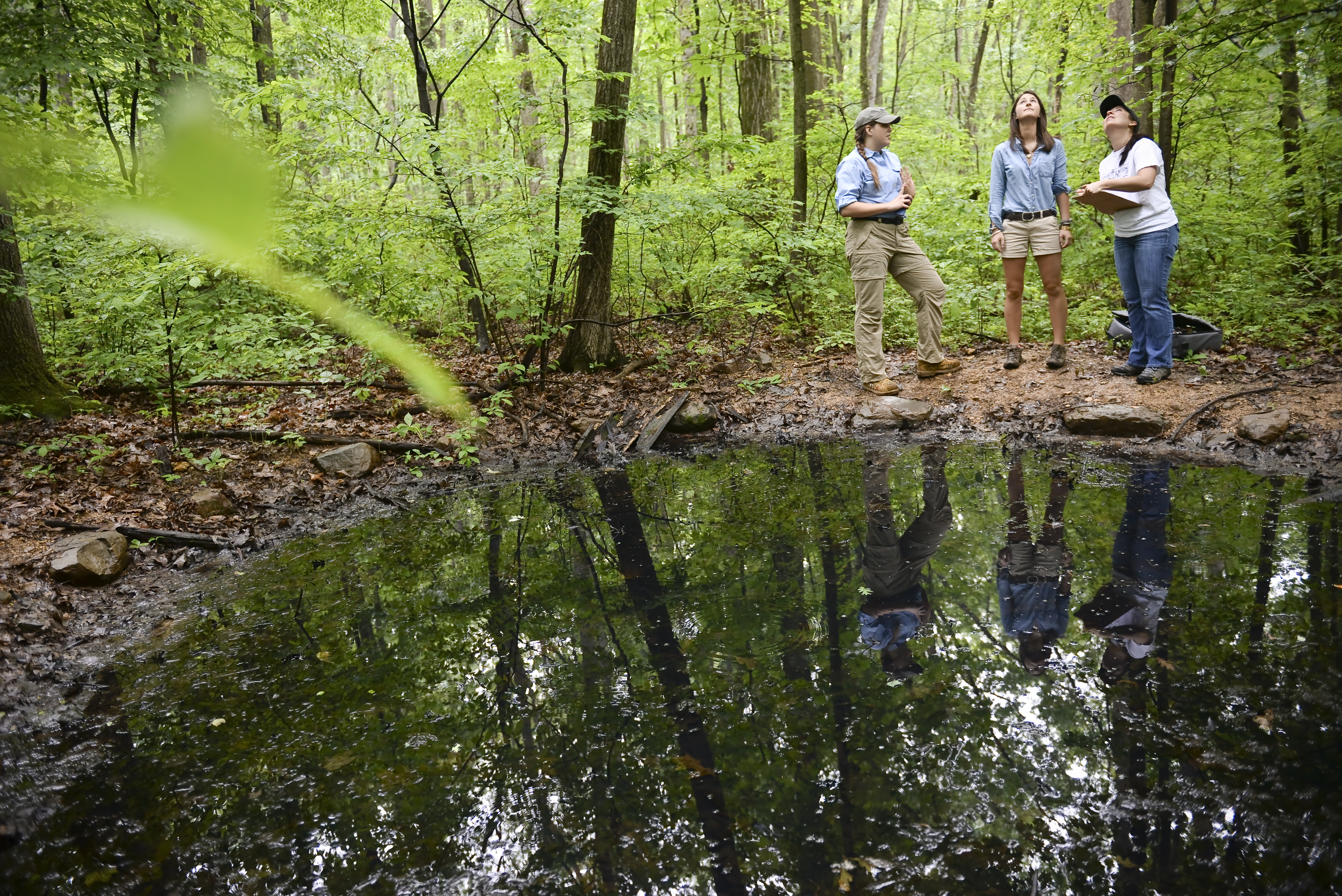
Katie Engberg ’15, Sarah Woodruff ’15, and I considering forest canopy cover over a created vernal pool in Jacobsburg State Park.
My interest in vernal pools began in 2011 when a group of students in my BIOL 341 class decided to create a vernal pool with the help of park managers in Jacobsburg State Park for their community-service oriented final project. In the concluding remarks of their report, they mentioned that there are few published studies regarding the success of constructed vernal pools in comparison to natural pools. Since then, we have identified many other vernal pools in eastern PA and NJ that fall into the categories of natural, created (construction of a pool where it did not formerly exist), and restored (rehabilitation of an existing pool). The overall aim of this project is to compare habitat quality between created/restored vernal pool project sites with natural, reference pools using reproduction and metamorphosis of two amphibian indicator species (i.e., the wood frog and spotted salamander) as measures of success.
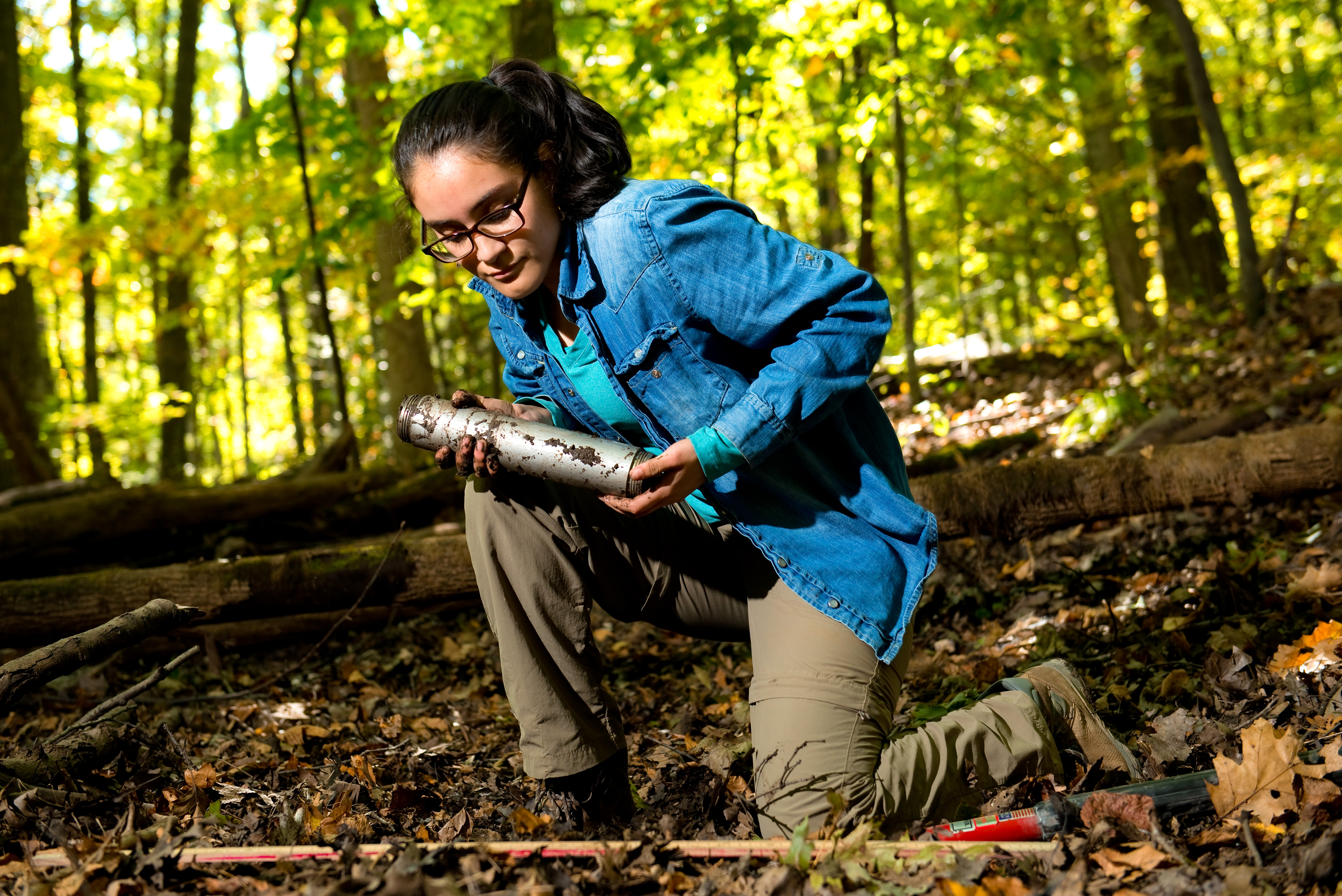
Karolina Vera ’17 extracting soil cores to compare color, redoximorphic features, texture, and organic matter content among natural, created, and restored vernal pools soils.
LAB FAM members who have contributed to this project: Liz Bourgault (Cole) ’13, Katie Engberg ’15, Tessa Broholm ’17, Karolina Vera ’17, Emily Ramirez ’18, Alison Baranovic ’19, and Olivia Sterantino ’23
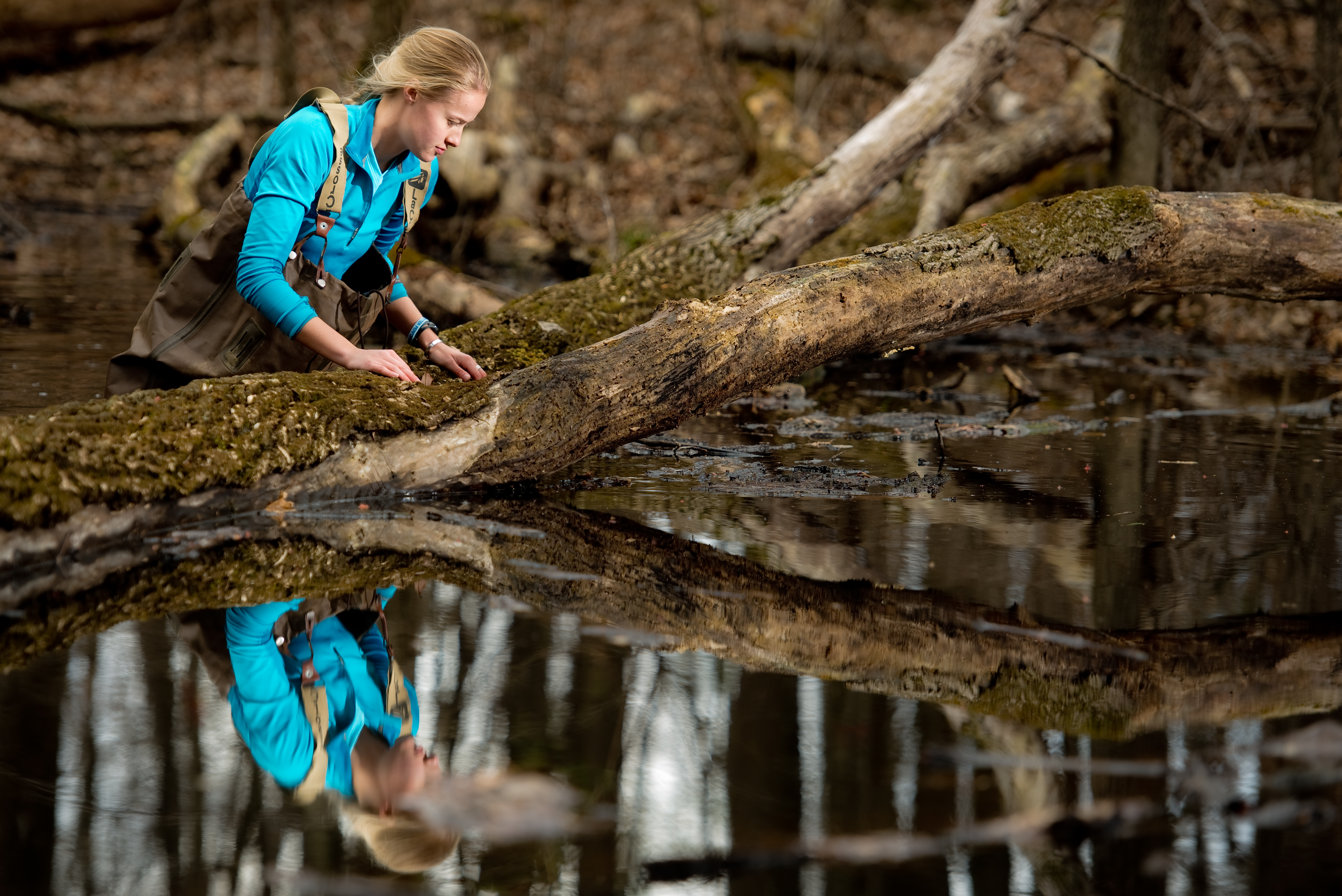
Tessa Broholm ’17 counts wood frog and spotted salamander egg masses at one of our natural vernal pools. We use egg mass density and larval metamorphosis as a way of comparing “success” among pools.
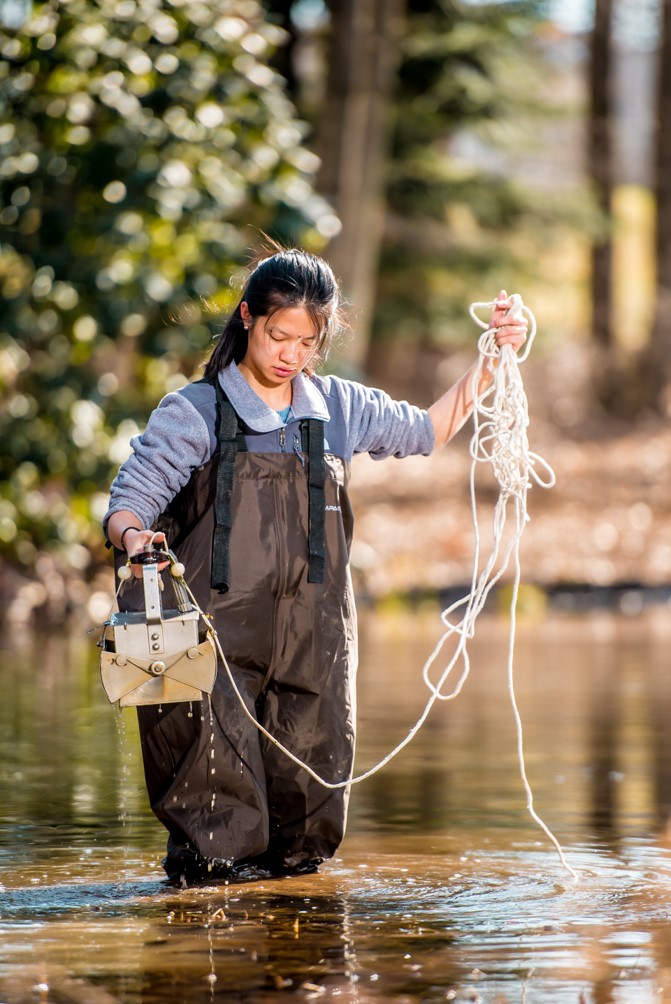
Alison Baranovic ’19 quantified and compared predators and prey in each of the vernal pools to determine whether these biotic factors are affecting amphibian survival differently in restored and created pools. Her work was published earlier this year (see link below).
The results of our efforts are described in two articles published in the journal of Restoration Ecology (Rothenberger et al. 2019 and Rothenberger et al. 2021).
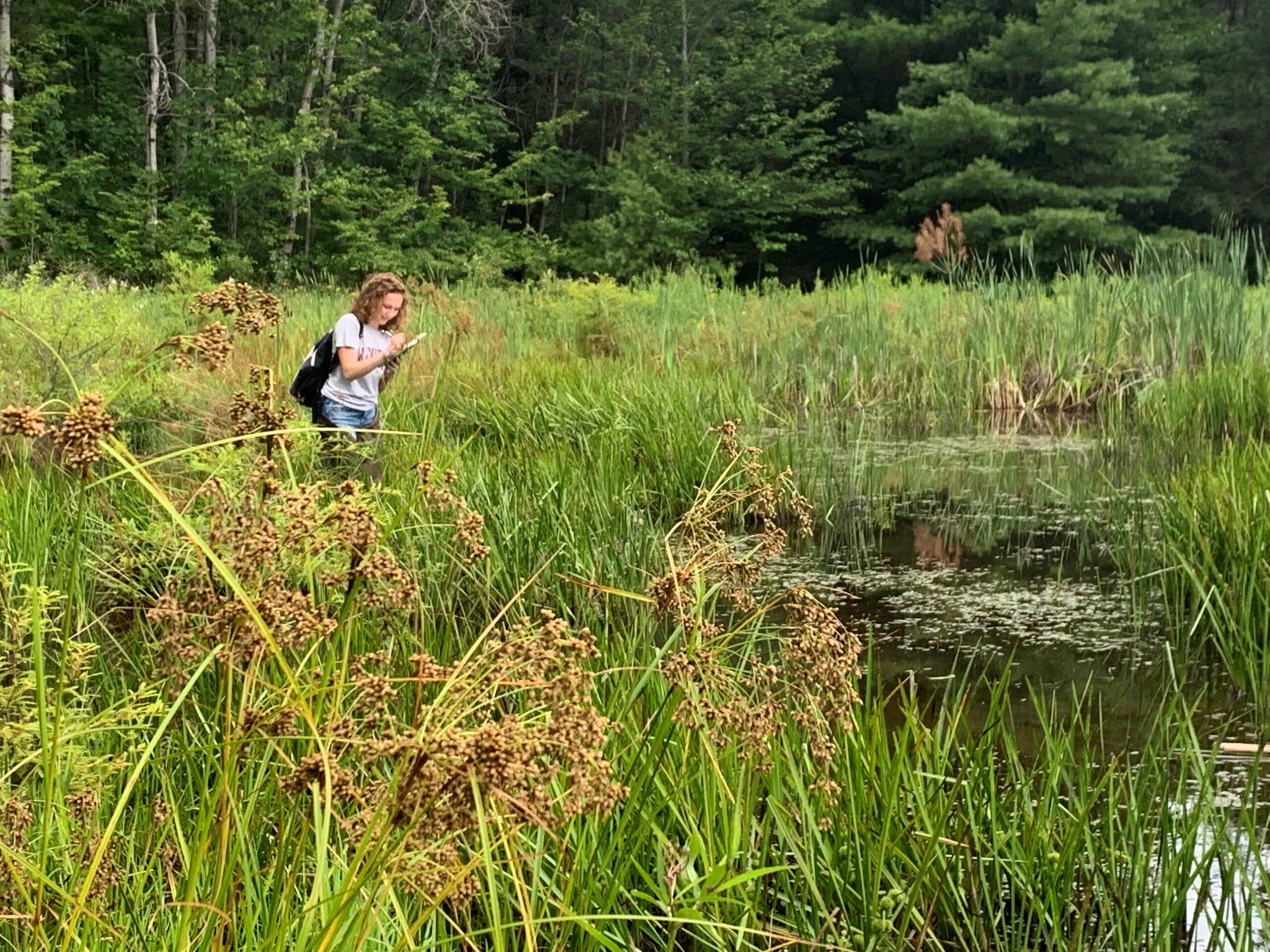
Olivia Sterantino ’23 writes a field description of this New York vernal pool in her journal. This site historically contained the endangered bulrush, but we did not find it growing in summer 2022.
The newest contribution to this project comes from Olivia Sterantino ’23 who went in a slightly different direction when she decided to study the northeastern bulrush (Scirpus ancistrochaetus), a federally endangered plant that occurs primarily in vernal pools. The first objective of her study was to update the monitoring data for northeastern bulrush populations in Pennsylvania and New York. Pennsylvania contains 62% of all known northeastern bulrush populations, and the majority of these sites were found to be in severe decline since 1993 (U.S. Fish and Wildlife Service 2008). To explore factors that may be contributing to disrupted recruitment of the plant, we carried out a soil seed bank analysis and germination study for the plant. Once integrated with existing information on this endangered species, our results help to conceptualize a cost-efficient, active, and integrated recovery plan with multiple potential conservation benefits. Olivia and I are currently working on a manuscript for submission to Biodiversity & Conservation.
